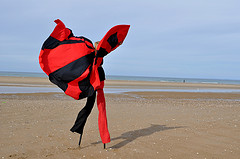Caterpillars can turn into butterflies. Amazing! That is what I call transforming your life! How do they do that?
Why can't I transform my life? Why can't we all change and stop humanity's horrors?
What is their secret? Those voracious and destructive caterpillars turn into beautiful delicate butterflies, flitting about pollinating flowers and crops. Stupendous!
From destruction to goodness. (Of course, the butterflies go on to mate and lay eggs that produce more, ugh, caterpillars … but please allow some metaphorical wiggle room here.)
To repeat: from destruction to goodness. Awesome. I just had to find out how it happens in case it might give me a clue to help myself and possibly others via taxonomic specification.
As you know, insects that commence in the larval stage form pupae as an intermediary stage, and that then converts into the adult creature. This conversion is a vulnerable time in development, so it happens inside a protective covering called a chrysalis or cocoon. As a school-boy I had to keep silk-worms in a box with mulberry leaves. I remember the silk cocoons were beautiful. But I cannot recall teacher explaining how moths appear.
So I Googled "what happens inside a chrysalis?" Most of the answers, including videos, only show the caterpillar slowly disappearing inside an enlarging covering that hardens into a capsule. Some also show a butterfly emerging. None gave any clue as to the trick going on inside.
So how do they do it?
The text on the webpages was rarely helpful: often saying something like: "the larva changes into a butterfly by a process called metamorphosis." Given that metamorphosis just means «transformative change», this is a bit like saying sleeping pills work by sedating you, or aeroplanes fly by staying up in the air.
This misdirection suggested to me that I was on to a well-guarded secret.
There is a conspiracy—someone somewhere doesn't want me to know how it's done. As I have said in so many blogs, change seems so hard to grasp, and once again that appears to be the case.
So the mystery only made me more determined. I kept looking and found the answer in an entomological research paper: it is a fantastic answer...
The larva doesn't change into a butterfly at all.
It doesn't?
No: because the butterfly was there all the time. Just in an undeveloped state.
Inside the chrysalis, the larva, that is to say the larval cells, are simply dissolved into their basic nutrients which are re-used to construct the butterfly.
Let me explain. The caterpillar from its birth contains small nests of cells called histoblasts which are the adult. These are located in various parts of its body and do nothing during caterpillarhood. Once their time has come inside the protective chrysalis, these cells become active. They multiply and start invading the larval tissues, and cause the larval cells to die and dissolve. They then metabolize those nutrients and differentiate into new tissues and organs.
Histoblasts are called «imaginal» cells. These imaginal cells generate the structures that are unique to the adult. Why call them imaginal? I suppose it is because they are the imago, an imagining as it were, of the future beautiful mature being that the creature must become if the species is to survive.
So what can we learn from this?
First: Change is not optional in our life, anymore than it is for the caterpillar. It never is, was or will be: so fighting against change is not a good idea. Life may be an evolving dynamic equilibrium: but that over-clever phrase is not much help to me! What is one to be in that totality of things?
Second: To know what we must be and do, there is only one resource, the same resource that caterpillars use: essential innate elements within our self that can grow, subject to being nourished by imagination. The old self, great though it surely was while it lasted, must die. Die as explained in the Monty Python sketch: be no more, go away, ascend to its maker, pass away, kick the bucket &c.
Third: That «death and re-birth» process must occur within a protected psychosocial environment akin to a cocoon. If we are subject to constant abuse by authorities, domestic disruptions, work harassment, struggles for survival, then those better elements don't get a chance to grow. Deformity or death-in-life is the likely end-result. That protective environment is provided by a trustworthy human relationship.
Fourth: The new self, uncertain though its nature may be, must be shaped from elements that have always been there. We cannot create a future for our self (or our family or community or society or humanity) like putting on a new coat or imitating the latest fashion or applying an artificial theory. Rather we must search within for what is best and then nurture those values so that energies are re-directed, and our old ways wither from an unwillingness to support them.
Through being deprived of credibility, those old ways dissolve and release their potentials and energies for the new. As we do that, reality will change—within and without.
I think that's it.
Caterpillars of the world unite!!
WK
About
Warren Kinston